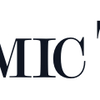Zerodha Fund House, which has just launched a new Multi Asset Passive FoF (fund of funds), comes with 25% allocation to gold ETF and 15% to G-Sec ETFs. The remaining 60% is divided equally between largecap and midcap ETFs.
"The 25% allocation to Gold ETF and 15% to G-sec ETF—together making up 40%—might seem high at first, but it’s intentional to help lower overall portfolio volatility. Gold acts as a hedge during market turbulence, and government securities provide stability and predictability," Vishal Jain, CEO, Zerodha Fund House, said.
Edited excerpts from a chat:
In the new Multi Asset Passive FoF, you’ve stitched together equity, debt, gold, and G-secs into one basket. What exactly is the rationale behind this fund? Which class of investors is it best suited for?
The Zerodha Multi Asset Passive FoF is basically a simple solution to invest your money across different asset classes — equity, gold, and government securities — all bundled into one easy-to-manage fund. The idea is to make investing simpler by taking away the hassle of deciding how much to put where and constantly keeping an eye on your portfolio.
This fund gives you a ready-made mix that’s diversified, balanced, and transparent. You don’t have to juggle multiple funds or worry about rebalancing. It’s like having a well-diversified portfolio on autopilot.
This fund is great for beginners who want a straightforward way to start investing without getting overwhelmed. It’s also handy for those who already have investments across various assets but want to bring it all under one roof to keep things tidy.
In short, if you’re looking for a simple, low-maintenance way to grow your money steadily over time with a mix of asset classes, this fund fits the bill perfectly.
Multi-asset funds have been popular in the last few months given the sharp returns seen in gold. Any downturn in the gold cycle can impact returns. How do you deal with that?
Well, different asset classes perform well at different points in time, and it's not easy to predict which one will do well going forward.
Our approach with the Zerodha Multi Asset Passive FoF is not to time the market or react to the short-term performance of any single asset class, including gold. The objective is to provide a balanced portfolio with better risk-adjusted returns over the long run, not to chase the returns of a particular cycle.
Tell us the rationale behind having 30% in Large Cap ETF, 30% Mid Cap ETF, 25% in Gold ETF and 15% in G-sec ETF. How do you justify 40% allocation in gold and government securities? Isn't that too high even for a moderate risk profile investor?
The 30% allocation each to Large Cap and Mid Cap ETFs reflects the focus on long-term growth through equities, capturing both the stability of established companies and the higher growth potential of mid-sized firms.
The 25% allocation to Gold ETF and 15% to G-sec ETF—together making up 40%—might seem high at first, but it’s intentional to help lower overall portfolio volatility. Gold acts as a hedge during market turbulence, and government securities provide stability and predictability.
This mix aims to strike the right balance: enough equity exposure for growth, combined with a strong dose of safer assets to manage risk. It’s designed especially for investors who want steady wealth creation without facing the roller-coaster swings that a 100% equity portfolio can bring.
What made you take equal exposure in largecaps and midcaps in the fund?
We chose to give equal exposure to large-caps and mid-caps because together, they cover around 80-85% of the Indian equity market. This way, the fund offers broad and meaningful participation in the market.
The equal split is a thoughtful balance—large-caps bring stability and steady returns since they are well-established companies, while mid-caps offer the potential for higher growth as they’re often in a phase of expansion.
Zerodha Fund House has seen impressive growth but competition is heating up amid the entry of newer players and most of them seem to be targeting the same passive fund space. Where do you think the moat lies in the passive fund management business? What will set you apart from your competitors?
We see more competition as a positive—it means the market is growing and more Indians are getting access to better investment options, which is exactly what we want to see and have set out to achieve.
We strongly believe that the future of investing is all about making the experience as simple and seamless as possible. That’s why we’ve built intuitive solutions like our WhatsApp investment journey, developed entirely in-house, to make investing easy and accessible for everyone.
We think this retail-first, tech-first approach will be a key differentiator for us that would help empower more people to start financial journeys with confidence.
As passive funds are becoming popular we are also noticing a flood of ETF NFOs on every possible theme entering the market. How do you see this trend evolving and whether it is becoming a problem for investors?
The rise of thematic and factor-based ETFs is a natural development as the passive investing space matures and investors look for more specific, targeted opportunities. These funds give you the chance to get exposure to particular sectors or investment strategies, which can be exciting and provide diversification beyond broad-market bets.
That said, the performance of these niche ETFs tends to be cyclical and harder to predict. So, they might not be the best fit for everyone’s core portfolio. Instead, it’s usually smarter to keep them as a smaller, “satellite” portion of your overall investments. That way, you can explore these specialized opportunities without putting your long-term financial goals at risk.
What’s your outlook on the product pipeline at a fund house level as well as industry level? Are we likely to see more thematic or factor-based ETFs in India, or will the focus remain on broad-based indices?
From the start, our focus has been on offering basic “building blocks” across equity, commodity, and debt segments, and then moving towards more solution-oriented products. The Zerodha Multi Asset Passive FOF is the first step towards introducing investors to simple solutioning and we will look at introducing more solutions going ahead besides expanding our offerings on the equity and debt side.
Looking at the broader industry, there’s been a strong surge in passive investing over the last few years and it’s encouraging to see the adoption growing rapidly in India. We do expect more thematic and factor-based products to be launched as part of this innovation wave.
So, while the industry will likely continue to innovate with more thematic and factor-based ETFs, the fundamental, long-term adoption will likely remain towards simple, broad-based passive funds that form the core of an investor's portfolio.
.png)
 17 hours ago
1
17 hours ago
1








 English (US) ·
English (US) ·